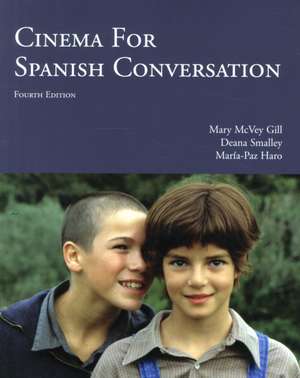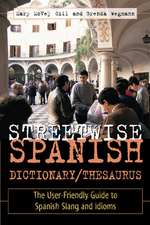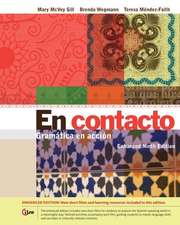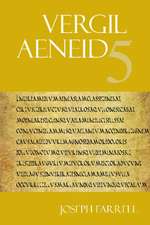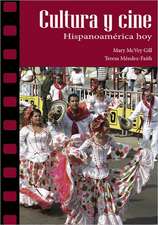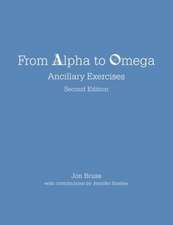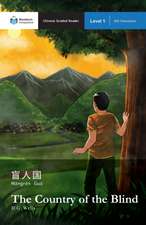Cinema for Spanish Conversation
Autor Mary McVey Gill, Deana Smalley, Maria-Paz Haroes Limba Spaniolă Paperback – 6 feb 2014
Preț: 473.06 lei
Preț vechi: 579.96 lei
-18% Nou
Puncte Express: 710
Preț estimativ în valută:
90.52€ • 95.19$ • 74.80£
90.52€ • 95.19$ • 74.80£
Carte disponibilă
Livrare economică 27 martie-10 aprilie
Preluare comenzi: 021 569.72.76
Specificații
ISBN-13: 9781585107063
ISBN-10: 1585107069
Pagini: 324
Dimensiuni: 203 x 254 x 17 mm
Greutate: 0.79 kg
Editura: Hackett Publishing Company
Colecția Hackett Publishing Company, Inc.
ISBN-10: 1585107069
Pagini: 324
Dimensiuni: 203 x 254 x 17 mm
Greutate: 0.79 kg
Editura: Hackett Publishing Company
Colecția Hackett Publishing Company, Inc.
Recenzii
"Cinema for Spanish Conversation is already a classic pedagogical text, geared for those students seeking to improve their verbal fluency in the Spanish language while exploring complex issues relating to contemporary Spanish-speaking societies and their diaspora through the lenses of the film industry. The text provides both students and instructors multiple pedagogical tools to achieve its goals and objectives. Each section has been designed carefully, is comprehensible and thorough and it is conceived in such a way that the instructor can have the liberty to delete or highlight some sections over others depending on the preparatory level of the students. That level of flexibility is an added-value to the text. The background information on directors, actors, the historical context and main characters of each film is an important resource that cannot be ignored. The easily access to related electronic or digital resources is another element that makes this text very attractive and successful... The film selection is excellent and representative of the many diverse contemporary concerns, techniques and countries..." -- Asela R Laguna, Rutgers University, Newark
"Students love watching films in general, and using a series of high quality films that are very rich in cultural content keeps them interested and actively involved in the class. [Cinema for Spanish Conversation] provides much needed structure for analysing and discussing the films. If I were left to my own devices for creating activities to discuss the same films, my efforts would probably lack the structure that students need to assimilate new vocabulary and to analyse themes and express their opinions... I think it is a great idea to include screen shots of the actors for exercises involving descriptions and identifications! Such photos, particularly in colour, certainly facilitate discussion and help to make the text a bit more visually appealing." -- Ruth Owens, Arkansas State University
"The new exercises challenge students and prompt them to think critically, to learn more about pressing questions in the Spanish-speaking world, and to produce their own ideas in the target language... The new chapter on "Tambin la lluvia" is excellent. It takes advantage of the film's context (a struggle over water rights in Bolivia and the re-enactment of the conquest) to not only include film analysis and relevant vocabulary but also teach colonial history." -- Elizabeth Guerrero, Bucknell University
"Students love watching films in general, and using a series of high quality films that are very rich in cultural content keeps them interested and actively involved in the class. [Cinema for Spanish Conversation] provides much needed structure for analysing and discussing the films. If I were left to my own devices for creating activities to discuss the same films, my efforts would probably lack the structure that students need to assimilate new vocabulary and to analyse themes and express their opinions... I think it is a great idea to include screen shots of the actors for exercises involving descriptions and identifications! Such photos, particularly in colour, certainly facilitate discussion and help to make the text a bit more visually appealing." -- Ruth Owens, Arkansas State University
"The new exercises challenge students and prompt them to think critically, to learn more about pressing questions in the Spanish-speaking world, and to produce their own ideas in the target language... The new chapter on "Tambin la lluvia" is excellent. It takes advantage of the film's context (a struggle over water rights in Bolivia and the re-enactment of the conquest) to not only include film analysis and relevant vocabulary but also teach colonial history." -- Elizabeth Guerrero, Bucknell University
